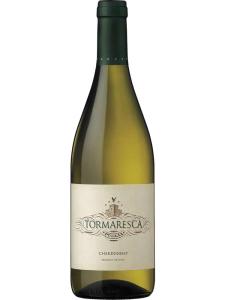Puglia IGT is a region-wide appellation title which covers, as might be inferred from the title, the Puglia region in southern Italy. Since its introduction in November 1995, it has been used to label more than 500 wines, making it one of the most widely used of Italy's 120 or so IGTs (and thus one of the country's most significant wine appellations).
Although the styles and grape varieties sanctioned for use in Puglia IGT wines are many, the majority of the wines are dry reds and whites produced from the region's traditional varieties: Primitivo, Negroamaro and Uva di Troia for reds and Falanghina, Fiano and Muscat for whites. Italy's favorite grape, Sangiovese, is also increasingly common in these wines.
More than 50 grapes were listed when the production laws were updated in 2013, creating an even split between red and white varieties. This number is likely to increase gradually in the next few years, as the region's winemakers continue to seek out and use new varieties.
The length of this list clearly reflects the increasing preference for varietal winemaking in southern Italy, itself a reflection of this trend in global consumer trends. As is common for IGT titles, the list shows a mix of Italian classics and the globally popular varieties that have made their way from France over the years (the most popular of which seem to be Chardonnay and Syrah).
The IGT category was introduced in the 1990s as a way of balancing out Italian wine classifications. Throughout the second half of the 20th Century, a number of Italian producers (particularly in Tuscany) eschewed the DOC system, with all its restraints and restrictions. They chose instead to make wines their way, accepting that they'd have to label them as 'Vino di Tavola', the lowest tier of Italian wine classification.
They enjoyed significant success doing so, which eventually meant that Italy's most respected wines were being labeled with its lowliest classification. To remedy this, the IGT category was introduced – a system which allowed greater stylistic winemaking freedom, and classified wines only by their geographical origin and not by which grape varieties or winemaking techniques were used in their production. This was all based on the Vin de Pays (VDP) model, which had already proven successful in France, so VDP and IGT are often compared with each other.
Right from the beginning, Puglia's wine producers warmly welcomed the IGT category, and the region is now one of Italy's key sources of IGT-level wine. The reasons for this are the same as those that made Languedoc-Roussillon the heartland of VDP wine in France. Puglia and the Languedoc have much in common: both are the most southerly, the warmest and the poorest regions in their respective nations. Both also have extensive Mediterranean coastlines bordered by plains rising steadily up into low-lying mountains and both are characterized by scrubby, sunbaked limestone soils, cooled down on summer evenings by fresh breezes from the Mediterranean.
Most significant of all is that, for the past century or so, both regions have focused their viniculture on quantity rather than quality, and both have a well-established system of co-operative winemaking. The latter goes a long way to explaining Puglia's enthusiastic uptake of the IGT category, whose relatively relaxed yield restrictions allow grape-growers and co-operatives to continue their traditions of high-yield production.
Beyond the regional Puglia IGT title, Puglia is home to several sub-regional IGT titles, which have also proved extremely successful. These are Tarantino, Salento, Daunia and Murgia.


